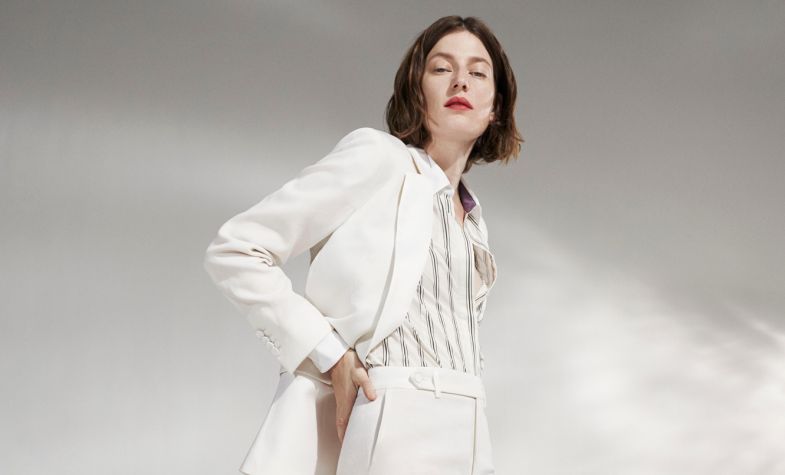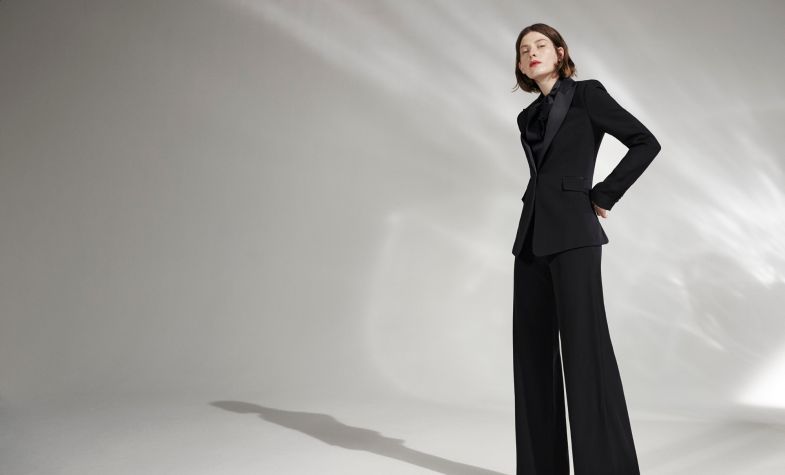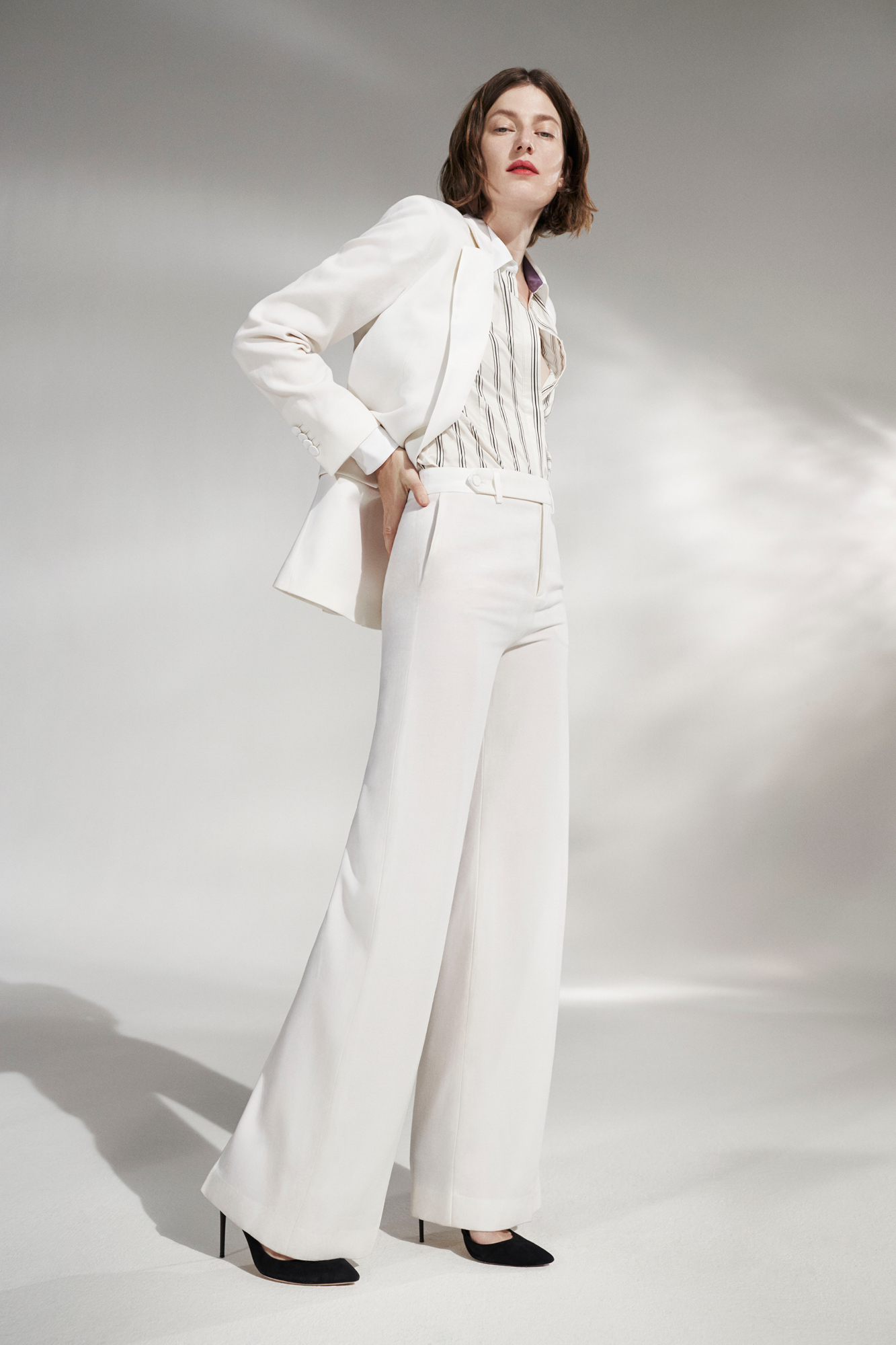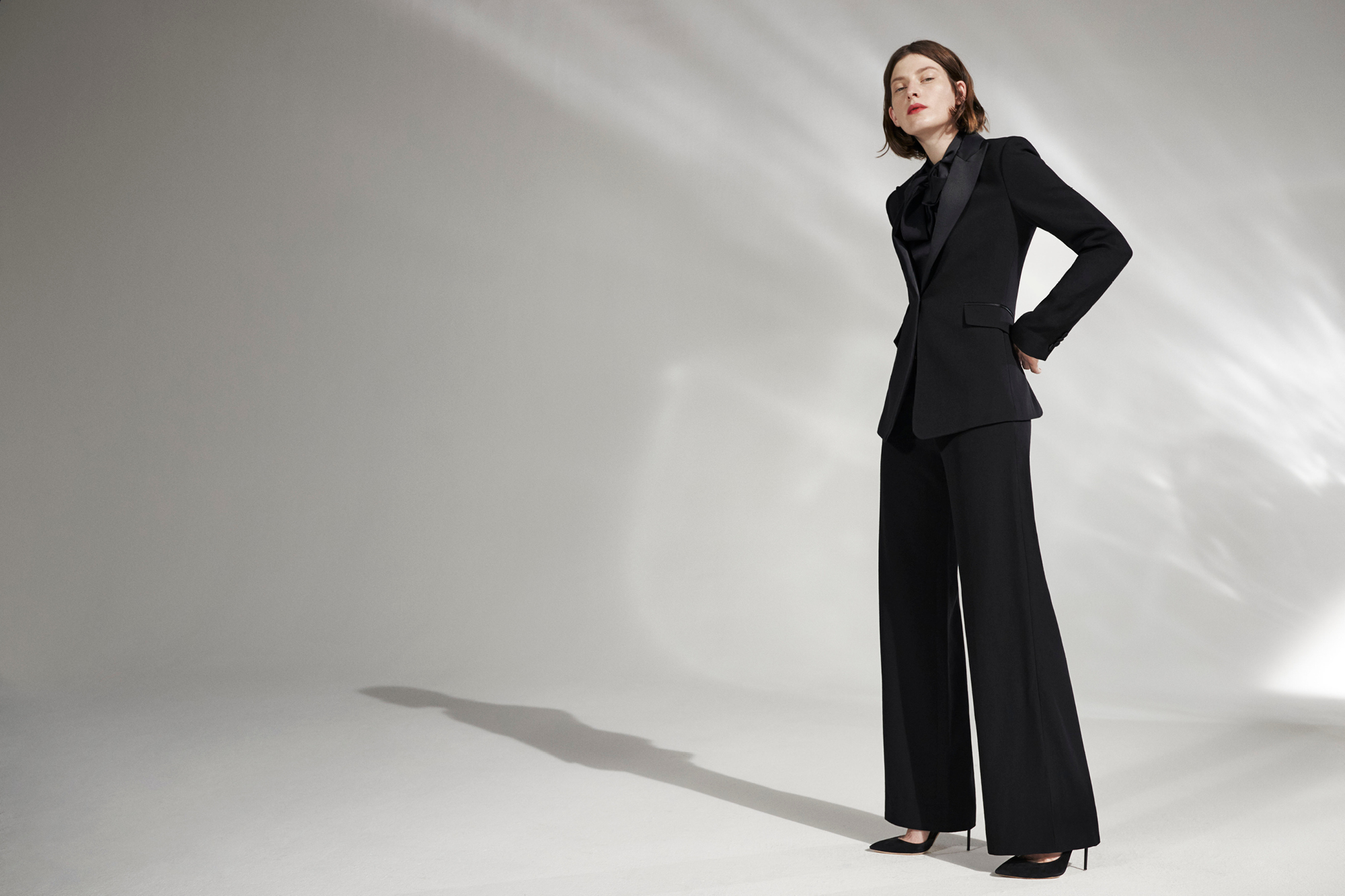WORDS
Joanne Glasbey
PHOTOGRAPHY
Emma Tempest
The thing about a woman wearing a tuxedo,’ Catherine Deneuve once observed, ‘is that it is virile and feminine at the same time.’
In 1966, when Yves Saint Laurent sent his “Le Smoking” tuxedo for women down the catwalk, he launched one of the most influential and iconic designs in fashion history. This audacious alternative to formal wear’s little black dress was a bold move at a time when – shockingly – it was still controversial for a woman to wear trousers in public.
Saint Laurent had reportedly been inspired by the avant-garde style of artist Niki de Saint-Phalle, who wore men’s suits with heels, as did Greta Garbo and Marlene Dietrich in the 1930s. This was way before trousers became acceptable as female fashion items, even though around this time the prescient Coco Chanel, who loved to borrow design cues from men’s attire, was creating elegant loose trousers for women.
Even in the mid-1960s, that culturally revolutionary decade, few upmarket hotels and restaurants tolerated female guests wearing trousers. One story goes that famous socialite Nan Kempner was turned away from a prestigious New York restaurant while wearing her YSL tuxedo. Embodying the defiant spirit of the suit, she irreverently removed the trousers and sashayed back into the restaurant wearing just the jacket as a thigh-skimming mini dress. Contrarily, unclothed thighs were deemed acceptable, but not when covered with material.
Through the decades, the androgynous suit continued to make a strong statement, representing freedom, power and ambiguity. Its sharply tailored, minimalist silhouette inspired a new attitude and was a signature piece in the wardrobes of well-known women such as Diane Keaton, Faye Dunaway, Charlotte Rampling, Liza Minnelli and Bianca Jagger, who married Mick Jagger in 1971 in a white tuxedo jacket with nothing underneath.
Despite reworkings and interpretations, the original Le Smoking design remained Yves Saint Laurent’s favourite. When his haute-couture atelier closed in 2002, this version was the very last piece to be made there, in fact ordered by Sir Paul Smith for his wife Pauline Denyer.
When he was a young man, Smith would go to the couture shows in Paris. YSL was a particular favourite, and when he saw the Le Smoking suit for the first time, he recalls, ‘I thought it was brilliant – the most sensual thing I had ever seen’. In his early designing years, women would come into his store in Covent Garden and buy men’s suits then have them altered to fit. One of these customers was the singer and songwriter Sade. Grace Coddington, the British creative director of US Vogue, also championed Smith’s developing menswear collection as pieces women could wear, and she shot shirts and suits on female models for her pages.
Eventually Smith launched womenswear in 1994 and, from the outset, tailoring was his design inspiration. As well as Le Smoking, he loved the way his friend Patti Smith dressed in tailored clothes, and the styles of Lauren Bacall and Rampling. Earlier this year, Smith worked with Polish model, actor and editor Malgosia Bela, who featured in his spring/summer advertising campaign. The two became friends and he invited her to sit in the front row of his autumn/winter fashion show. For the occasion, he made her a bespoke tuxedo suit. The experience rekindled his memories of the suit worn by his wife Pauline, and his enduring love for the style, and he has just launched a capsule collection based around three new styles of tuxedo suits for women.
The impeccably cut collection comprises a classic tuxedo jacket, a double-breasted jacket, a double-breasted evening coat and a single-button slim coat, while trousers are flat-fronted with a high waist, flowing from a narrow hip to a wide leg. The collection, in a refined monochrome palette, is completed by a series of silk shirts and a silk cami top, with an evening bag and high shine Derby shoes. Sexy, elegant and confident: there should be one in every woman’s wardrobe.








